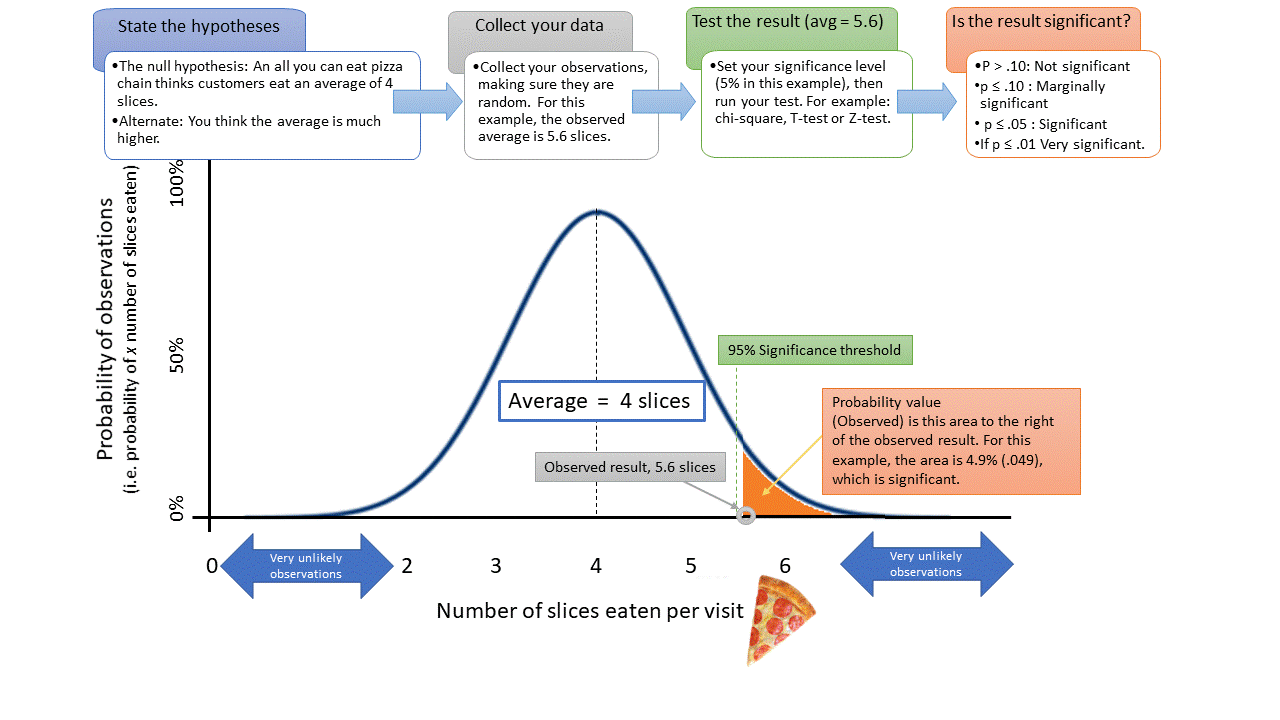::
I’m not sure if I follow your question. The p-value is not a ‘point’ in a distribution curve or axis, but rather the probability that observed results would be at least as extreme as those measured when the null hypothesis is true. i.e. that your observed results would seemingly defy the null hypothesis even if the null hypothesis is true.
In a distribution curve, it would be represented by the area under the curve ‘outside’ of the z-value or t-value.
A low p-value means that your observed results are unlikely to falsely reject the null hypothesis H0, i.e. your observed results are statistically significant.
This might help (source: Data Science Central):
